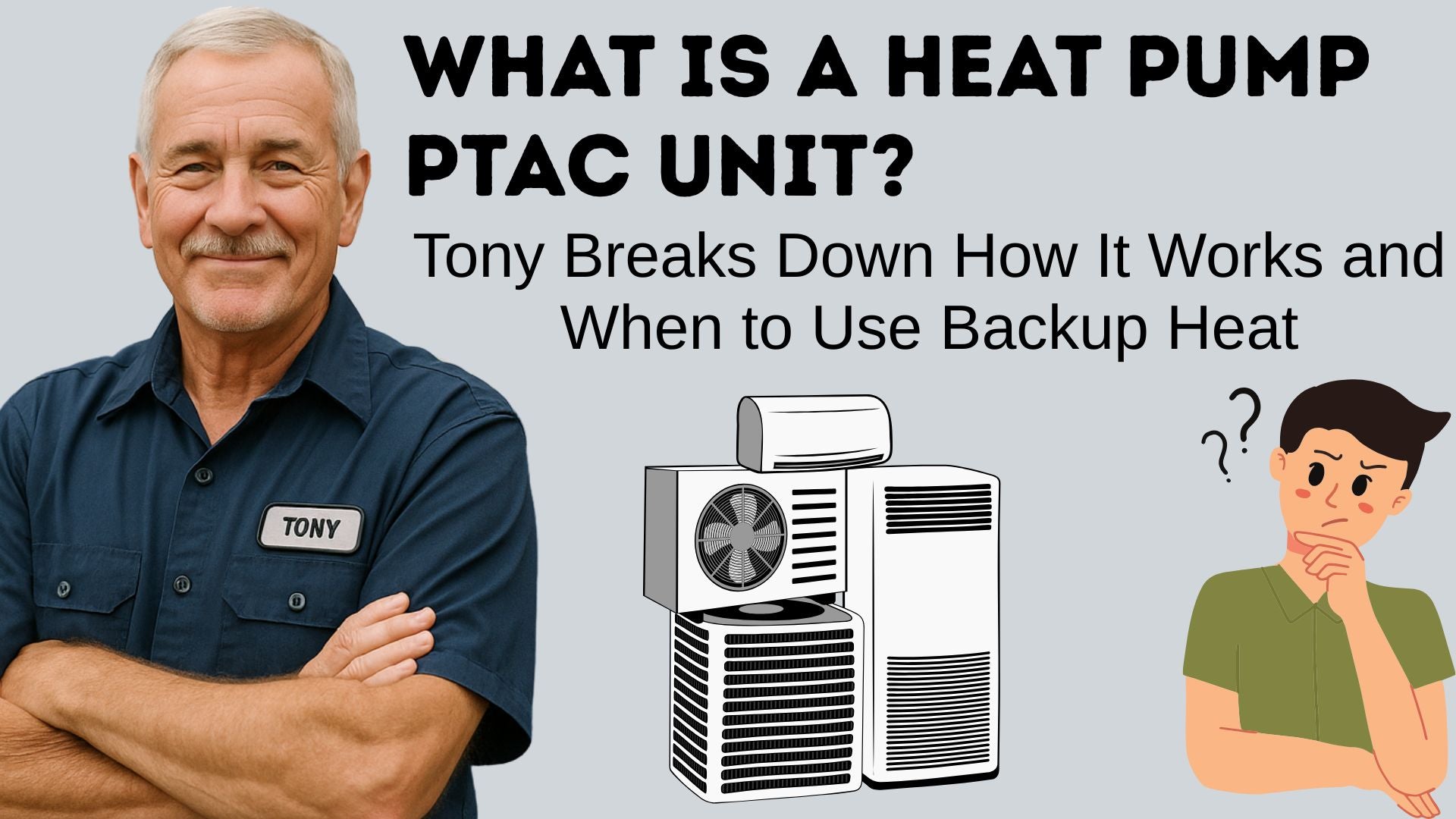🧰 Introduction: What You're Dealing With
Let’s keep this simple. If you’ve got or are considering something like the Amana Distinctions Model 14,700 BTU PTAC Unit with Heat Pump and 3.5 kW Electric Heat Backup, you’re dealing with a two-stage PTAC system.
You’ve got a heat pump doing the heavy lifting most of the year, and a resistive electric heat strip backing it up when it gets too cold. Understanding when each kicks in can save you money—and prevent a lot of headaches.
🔄 How a Heat Pump PTAC Works (Without the Fluff)
A heat pump PTAC unit is basically an air conditioner that can run in reverse. In cooling mode, it pulls heat from inside the room and dumps it outside. In heating mode, it pulls heat from outside (yep, even in chilly air) and pumps it inside.
Here’s the deal though:
-
Heat pumps work best above 35°F to 40°F
-
Below that, efficiency drops and they can struggle to keep up
-
That’s when your electric heat backup kicks in
This setup gives you year-round comfort with better efficiency than just using electric heat alone.
💡 When Does the Backup Heat Turn On?
This varies by model and thermostat settings, but here’s how it usually goes:
| Outdoor Temp | Heat Mode Behavior |
|---|---|
| 45°F+ | Heat pump only – efficient, low cost |
| 35°F–45°F | Heat pump runs with some backup assist |
| Below 35°F | Electric strip heat takes over completely |
Electric backup is more expensive to run than the heat pump, so the system tries to avoid using it unless it’s really necessary. But when it’s 20°F and blowing sideways? That heat strip is your best friend.
⚙️ What’s the 3.5 kW Backup Heat Mean?
This just tells you how much power the electric backup can pump out.
-
3.5 kW = about 11,900 BTUs of heat
-
It’s powered by about 15 amps at 208V or 265V, depending on your unit voltage
-
It kicks in automatically—no extra controls needed
It’s sized to keep the room warm even when the heat pump isn’t pulling its weight.
🔌 Why It Matters: Real Talk from a Tech
1. Don’t Oversize the Heat Strip
More isn’t always better. A 5 kW heat kit may trip breakers if your wiring can’t handle it. Always match the heat kit amps with the circuit size.
2. Know Your Region
If you’re down South, you might hardly use the electric heat. But up north? That backup heat gets a workout—and you’ll see it on your energy bill.
3. Thermostat Compatibility
Some wall thermostats need to know there are two heat stages—heat pump and electric. Don’t cheap out on the thermostat if you want full functionality.
🏆 Why This Amana Model Nails It
The Amana Distinctions 14,700 BTU PTAC with heat pump and 3.5 kW electric backup is a great all-around choice because:
-
You get efficient heat in mild temps
-
You’ve got backup heat when it really gets cold
-
It’s self-contained—no ductwork needed
-
You avoid full-time electric heat costs
Perfect for hotels, rentals, offices, and even garages or bonus rooms where ducted HVAC isn’t worth the hassle.
🔚 Final Word from Tony the Tech
If you’ve got one of these PTAC units or you’re shopping for one, just remember this:
The heat pump saves you money. The backup heat saves your behind.
Get the right unit for your space, understand how it behaves in different seasons, and you’ll stay warm without torching your wallet.
🔗 Related Resources (for SEO and value)
In the Next topic you will read about: 208V vs 265V PTAC Units







